#Writer's resources
Text
Fantasy Guide to Education

I'm always asked what sort of education different people recieve throughout different historical eras and since I'm heading back to college soon, I thought it was high time I made this guide.
Disparity

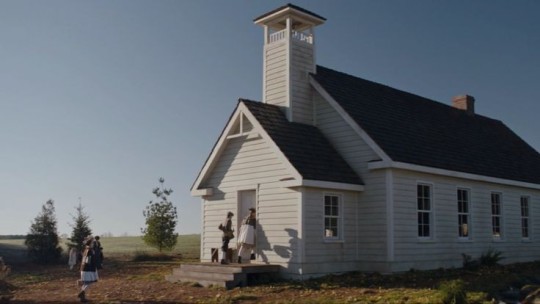
Education is viewed as a right by many but for some and thoughout history it was a privilege. For the wealthy and those of high status, education can be easily accessed. They can afford to tailor an education to fit their needs, they can hire tutors, and they can afford tuitions to top schools. For the poor, education was a luxury. However this doesn't mean that it was available. Some communities would fund a school or send their children to a local teacher - usually they had to pay a daily fee or at least bring kindling for the heating. Many poorer children also worked so they could not attend school consistently or were pulled out very early into their education. However, some poorer students could gain access to high level education if they were extremely bright or caught the attention of a wealthy benefactor who could fund their education.
Education as a Weapon

Education could also be banned for certain groups in society. It could be illegal to fund schools or host gatherings for students of a certain background, race, religion or gender. Education against the law could be punished by imprisonment, exile or execution. This is a measure usually taken by oppressive governments in order to follow a moral code or restrict the betterment of a certain group. An example would be the Irish Catholics under the Penal Laws.
On the otherhand, there is education that is influenced by the state to inject certain values, moralities and Opinions into a population. This is the intense restriction of reading material, removal of books that contest the teachings of the government or the kidnap of children from their culture, in order to forcibly educated them in alignment to their beliefs. An example would be the residental schools of North America and Canada and the AHS schools of Nazi Germany.
Content

As above, content of what children learn usually falls into a certain category. This is also true for the education offered to the wealthy and the poor. The poor would be offered a basic education, learning literacy and arithmetic, usually with an expectation that the children would not go on to any jobs that needs a broader education. Any higher education would be hard to obtain because of cost and the discriminatory view of the enrollment panels. The wealthy would have access to an array of different subjects including: The arts (drawing, music, painting, poetry, dancing), sports (riding, martial skills, rowing, hunting), arithmetic, geography, languages, geography and history. While progression to higher education will still be difficult, any affluent families are legacies of prestigious colleges or can make a donation to grease a few palms. These schools would be where the wealthy make lifelong connections and get springboarded toward opportunities.
Private Tutoring

Whilst some affluent, aristocratic and Royal families send their children to schools, private tutoring in the home was a popular choice. Children would be educated at home but tutors who either lived in the home or come to the house. The children would be educated alongside siblings or the children of courtiers or neighbours. Private tutoring sessions would often be the only education for upper class women recieved, taught by governesses and tutors.
Premises and Equipment
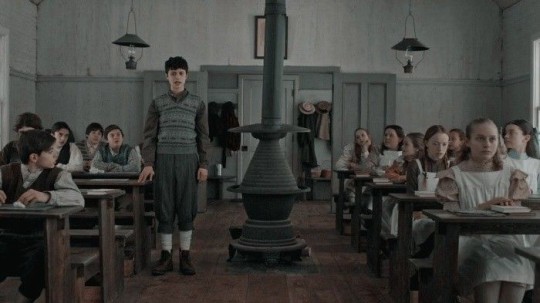
As mentioned above, wealthy and aristocratic families would usually attend established schools or attend school at home. They would be provided any equipment they needed. If they attend school, they would often wear a uniform. Some schools had multiple variations of the uniform for different activities. Many of the schools attended would be boarding schools. Boarding schools offered education to those who boarded and day students, however day students were often looked down upon as lesser than.
Poorer schools would be relient on donations and fees paid by students. As mentioned above, there may be a building reserved for classes - sometimes an designated schoolhouse or a teacher's home or a public building such as a gathering house or sometimes even outside - hedge schools. Equipment would be provided by the school. Uniforms at poorer schools were not a thing but students were expected to show up neat and tidy.
Corporal Punishment

Corporal punishment at schools was the go to punishment for students. Teachers had free rein to strike children for mistakes and bad behaviour. Punishments include insolation, physical stress positions such as standing on a chair all day, getting objects thrown at them, being slapped on the back of the legs with a cane, being rapped on the palms or knuckles with a crop or ruler. Students may also be humiliated by teachers through the use of dunce hats, encouraging other children to bully them or by the use of verbal abuse. Corporal punishment did extend to all classes except for royal children since that was either taken by proxy by whipping boys or left up to parents.
#Fantasy Guide to Education#Fantasy Guide#writing#writeblr#writing resources#writing reference#writing advice#writer#spilled words#writers#Writer's research#Writer's resources#Writer's reference#writer's problems#Writing help#Writing resources writing reference#Writing reference writing resources
798 notes
·
View notes
Text
Some Japanese Resources centered mostly around the Muromachi Period/Segoku Jidai
Hey in case anyone is curious about writing a fictional story set sometime during the Muromachi Period and the Edo Period including the Sengoku Jidai. I got a couple resources for you.
Dress & Accessories - This isn't that extensive but it gives a good overview.
Men's Garments - A more extensive overview for men.
Women's Garments - A more extensive overview for women.
Trees of Kanto and other Woody Plants - An overview for what types of trees you might find on the main island of Japan.
Scott's Japan Travel Journal - Has some beautiful pictures of flowers and foliage all over Japan on different blog posts. Its actually pretty fucking amazing.
Japanese Names - Both surnames and first names. Now I am stretching with my story by everyone having a surname cause I want to.
#writingadvice#writer's resources#writing resources#japanese fiction resources#creativing writing#writeblr
2 notes
·
View notes
Text
The symbolism of flowers
Flowers have a long history of symbolism that you can incorporate into your writing to give subtext.
Symbolism varies between cultures and customs, and these particular examples come from Victorian Era Britain. You'll find examples of this symbolism in many well-known novels of the era!
Amaryllis: Pride
Black-eyed Susan: Justice
Bluebell: Humility
Calla Lily: Beauty
Pink Camellia: Longing
Carnations: Female love
Yellow Carnation: Rejection
Clematis: Mental beauty
Columbine: Foolishness
Cyclamen: Resignation
Daffodil: Unrivalled love
Daisy: Innocence, loyalty
Forget-me-not: True love
Gardenia: Secret love
Geranium: Folly, stupidity
Gladiolus: Integrity, strength
Hibiscus: Delicate beauty
Honeysuckle: Bonds of love
Blue Hyacinth: Constancy
Hydrangea: Frigid, heartless
Iris: Faith, trust, wisdom
White Jasmine: Amiability
Lavender: Distrust
Lilac: Joy of youth
White Lily: Purity
Orange Lily: Hatred
Tiger Lily: Wealth, pride
Lily-of-the-valley: Sweetness, humility
Lotus: Enlightenment, rebirth
Magnolia: Nobility
Marigold: Grief, jealousy
Morning Glory: Affection
Nasturtium: Patriotism, conquest
Pansy: Thoughtfulness
Peony: Bashfulness, shame
Poppy: Consolation
Red Rose: Love
Yellow Rose: Jealously, infidelity
Snapdragon: Deception, grace
Sunflower: Adoration
Sweet Willian: Gallantry
Red Tulip: Passion
Violet: Watchfulness, modesty
Yarrow: Everlasting love
Zinnia: Absent, affection
#writers#creative writing#writing community#writing#writers of tumblr#writing inspiration#creative writers#writeblr#writerblr#writing tips#flower symbolism#writing subtext#writblr#writers corner#how to write subtext#symbolism in writing#writing advice#creative writing tips#writing resources#writing help#writer tips#writing tips and tricks#helping writers#help for writers#references for writers#writing reference#writers block#beat writers block#novel writing
49K notes
·
View notes
Text
Words to Use Instead Of...
Beautiful
stunning
gorgeous
breath-taking
lovely
jaw-dropping
pretty
glowing
dazzling
exquisite
angelic
radiant
ravishing
excellent
ideal
sightly
wonderful
elegant
bewitching
captivating
mesmerizing
enthralling
magnetic
impressive
tasteful
charming
desirable
enchanting
Interesting
stricking
unusual
appealing
absorbing
srresting
gripping
riveting
alluring
amusing
exceptional
fascinating
impressive
provocative
prepossessing
exotic
readable
refreshing
entrancing
exceptional
Good
honest
upright
dutiful
enthical
pure
guiltless
lily-white
reputable
righteous
tractable
obedient
incorrupt
respectable
honorable
inculpable
irreprehensible
praiseworthy
well-behaved
uncorrupted
irreproachable
Awesome
wondrous
amazing
out-of-this-world
phenomenal
remarkable
stunning
fascinating
astounding
awe-inspiring
extraordinary
impressive
incredible
mind-blowing
mind-boggling
miraculous
stupendous
Cute
endeaing
adorable
lovable
sweet
lovely
appealing
engaging
delightful
darling charming
enchanting
attractive
bonny
cutesy
adorbs
dear
twee
Shy
modest
sel-effacing
sheepish
timid
way
reserved
unassured
skittish
chary
coy
hesitant
humble
introverted
unsocial
bashful
awkward
apprehensive
If you like my blog, buy me a coffee☕ and find me on instagram! 📸
#writer#writers#creative writing#writing#writing community#writers of tumblr#creative writers#writing inspiration#writeblr#writing tips#writers corner#writers community#poets and writers#writing advice#writing resources#writers on tumblr#writers and poets#helping writers#writing help#writing tips and tricks#how to write#writing life#let's write#resources for writers#references for writers#writers block#ao3 writer#writerscommunity#female writers#writer things
4K notes
·
View notes
Text
HOW TO GIVE PERSONALITY TO A CHARACTER
Giving personality to a character is an essential part of character development in storytelling, whether you're writing a novel, screenplay, or creating a character for a role-playing game. Here are some steps and considerations to help you give personality to your character:
Understand Their Backstory:
Start by creating a detailed backstory for your character. Where were they born? What were their childhood experiences like? What significant events have shaped their life? Understanding their past can help you determine their motivations, fears, and desires.
2. Define Their Goals and Motivations:
Characters often become more interesting when they have clear goals and motivations. What does your character want? It could be something tangible like a job or a romantic relationship, or it could be an abstract desire like happiness or freedom.
3. Determine Their Strengths and Weaknesses:
No one is perfect, and characters should reflect this. Identify your character's strengths and weaknesses. This can include physical abilities, intellectual skills, and personality traits. Flaws can make characters relatable and three-dimensional.
4. Consider Their Personality Traits:
Think about your character's personality traits. Are they introverted or extroverted? Shy or outgoing? Kind or selfish? Create a list of traits that describe their character. You can use personality frameworks like the Myers-Briggs Type Indicator or the Big Five Personality Traits as a starting point.
5. Give Them Quirks and Habits:
Quirks and habits can make a character memorable. Do they have a specific way of speaking, a unique fashion style, or an unusual hobby? These details can help bring your character to life.
6. Explore Their Relationships:
Characters don't exist in isolation. Consider how your character interacts with others. What are their relationships like with family, friends, and enemies? These relationships can reveal a lot about their personality.
7. Show, Don't Tell:
Instead of explicitly telling the audience about your character's personality, show it through their actions, dialogue, and decisions. Let the reader or viewer infer their traits based on their behavior.
8. Create Internal Conflict:
Characters with internal conflicts are often more engaging. What inner struggles does your character face? These can be related to their goals, values, or past experiences.
9. Use Character Arcs:
Consider how your character will change or grow throughout the story. Character development is often about how a character evolves in response to the events and challenges they face.
10. Seek Inspiration:
Draw inspiration from real people, other fictional characters, or even historical figures. Study how people with similar traits and backgrounds behave to inform your character's actions and reactions.
11. Write Dialogue and Inner Monologues:
Writing dialogue and inner monologues from your character's perspective can help you get inside their head and understand their thought processes and emotions.
12. Consider the Setting:
The setting of your story can influence your character's personality. For example, a character who grows up in a war-torn environment may have a different personality than one raised in a peaceful, affluent society.
13. Revise and Refine:
Don't be afraid to revise and refine your character as you write and develop your story. Characters can evolve and change as the narrative unfolds.
Remember that well-developed characters are dynamic and multi-faceted. They should feel like real people with strengths, weaknesses, and complexities. As you write and develop your character, put yourself in their shoes and think about how they would react to various situations. This will help you create a compelling and believable personality for your character.
#writeblr#writing advice#creative writing#writerscommunity#writer problems#writing resources#writing community#writers on tumblr#writers block#the writer struggle#writing tips#writers#uservolkova
11K notes
·
View notes
Text
writers' resources
sick of using "very _____" ? : https://www.losethevery.com/
want to simplify your writing ? : https://hemingwayapp.com/
writing buddies / motivation ? : https://nanowrimo.org
word you're looking for but don't know ? : https://www.onelook.com/thesaurus/
need a fantasy name ? : https://www.fantasynamegenerators.com/
need a fantasy name ? : https://nameberry.com/
want a name with meaning ? : https://www.behindthename.com/
who wants a map maker! : https://inkarnate.com/
story building / dnd ? : https://www.worldanvil.com/
need some minimalistic writing time ? : https://zenpen.io/
running out of ideas ? : https://blog.reedsy.com/creative-writing-prompts/
setting a goal ? how about 3 pages / day ? : https://new.750words.com/
what food did they eat ? : https://www.foodtimeline.org/
questions on diversity within writing ? : https://writingwithcolor.tumblr.com/
now what was that colour called ? : https://ingridsundberg.com/2014/02/04/the-color-thesaurus/
want more? : https://www.tumblr.com/blog/lyralit :]
#writing resources#writers#writers block#lyralit#creative writing#writerblr#writblr#writing prompts#writing ideas#writing
15K notes
·
View notes
Text
10 Tips for Crafting Authentic Characters
Give them depth: Create characters with multidimensional personalities, including strengths, weaknesses, quirks, and flaws. They should have a mix of virtues and vices that make them relatable and interesting.
Provide backstory: Develop a detailed backstory for each character, even if only a fraction of it makes it into your story. Understanding a character's past experiences, traumas, and motivations will inform their actions and decisions in the present.
Show their emotions: Allow your characters to express a range of emotions realistically. Show how they react to different situations, both internally and externally, to make them feel human and relatable.
Give them distinct voices: Each character should have a unique way of speaking, with distinct vocabulary, syntax, and speech patterns. This helps readers differentiate between characters and adds authenticity to their dialogue.
Create internal conflicts: Give your characters inner struggles and conflicting desires that they must grapple with throughout the story. Internal conflicts add depth and complexity to characters, making them more believable.
Show their relationships: Develop meaningful relationships between characters, whether they're familial, romantic, platonic, or adversarial. Show how these relationships evolve and influence the characters' development over time.
Make them evolve: Characters should grow and change over the course of the story, driven by their experiences and the challenges they face. Allow them to learn from their mistakes, overcome obstacles, and develop as individuals.
Ground them in reality: Anchor your characters in the real world by giving them relatable experiences, hobbies, jobs, or cultural backgrounds. Incorporating realistic details adds depth and authenticity to their portrayal.
Show their flaws: Imperfect characters are often the most compelling. Don't be afraid to showcase your characters' flaws and vulnerabilities; these imperfections make them more relatable and human.
Give them agency: Allow your characters to drive the plot forward through their actions, decisions, and choices. Avoid making them passive observers or mere vehicles for the story's events. Characters with agency feel more authentic and engaging to readers.
#writing tips#writing advice#writers on tumblr#writeblr#creative writing#fiction writing#writerscommunity#writing#writing help#writing resources
4K notes
·
View notes
Text
Ways to solve the Why Can’t They Use Magic To Fix Everything problem:
•Magic has a cost. The more powerful the spell, the more it drains the caster’s life.
•’We tried that ages ago.The gods grew angry at our arrogance and stripped most of our powers away.’
•Magic is tied to the stars and planets. Its full potential can only manifest on certain astrological events.(And these are once-in-a-millennia type events)
•Only one will a pure heart and selfless intentions can use their full power.
•All magic users are descendants of a (god/spirit). As the years have gone by, the blood has become more diluted, and magic has grown weaker as a result.
•Spell casters can only cast (finite number of spells). They end up using their gift on trivial matters.
•’After the war, we realized the dangers that magic presented. And so we sealed it away, lest it destroy the world.’
•Everyone has magic. Trying to solve one problem is futile as it can be easily undone(often violently and with much destruction)
•inverse of the above: everyone has magic, but their powers are limited and (mostly) harmless.
•Individual, company, or nation has a monopoly on the only substance that can negate magic. As they rule the world, they have installed anti-magic devices everywhere.
•Individual, group, company, or nation has a monopoly on magic. To insure their grip on power, all magic users that do not submit to them are killed.
•An act of good will spawn one of evil. The use of fire will cause somewhere to grow cold and dark. And to save a life, one must sacrifice another.
•The only magic people have access to is Chaos Magic. No one uses it, for obvious reasons.
—••• •• ——• ——• • ••• —•• •• —•—• —•— ••— •••
#writing#creative writing#writing inspiration#writing problems#writing resources#writer#writers#writers and poets#magic#magic system#writer on tumblr#writeblr
4K notes
·
View notes
Text
Yearly reminder to everyone trying to find alternatives to tumblr/social media in general: go make a Neocities account and teach yourself basic HTML and post your art/writing/shitposts there.

It does take extra time to set up (but there are templates out there!) but it is so so worth it to have a site that is 100% YOURS!

You don’t even have to be that good at coding. I’m not. My site is not very accessible via mobile devices but that is fine with me (keeps me off my phone) but there are plenty of ways to make your site mobile friendly. There are plenty of bare bones/accessible sites I adore purely for the media on it.

Imagine having your site on your phone and showing someone- hey! I coded this from scratch. And I didn’t even have to pay a company like squarespace. All your images, links, writings, in one place. I have my fandom edits, memes, fanart, and custom graphics there.
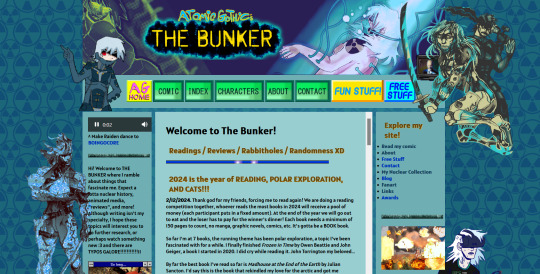
Neocities has a very bare bones follower and comment system, but you can disable this if you want your site to truly abstain from any social media-isms. I use it because its a great way to meet other webmasters and get help with coding problems. Neocities isn't an exact replacement for Tumblr (no reblogging here) but html coding is an invaluable skill to know, as is keeping a personal website in this day in age.

The awesome thing about having your own website is if, god forbid, Neocities goes down, you can move your site to any other number of hosting platforms (like Teacake.org). Your site is truly YOURS, and no one else (shitty tech CEO cough cough) can take it away from you.
If you need help getting started, I recommend checking out sadgrl.online. (More links to resources in the comments section of this post).
I know neocities has been talked about before, especially within my follower circle, but I thought I'd bring it up again for anyone unaware of this awesome platform.
#neocities#website#website design#personal website#web resources#indie web#web graphics#web#social media#artists on tumblr#writers on tumblr#tumblr alternative#twitter#instagram#html website#html coding#madlyfluffy#coding
4K notes
·
View notes
Text


Show, don't tell : Part 1
Directory Writing Masterlist Blog Etiquette Buy me a Ko-Fi?

[ Angry + Frustrated ]
Red face
Tensing up jaw/body
Clenching fists
Gritting teeth
Stomped feet
Rolling eyes
Crossing arms
Kick/Hit something
Eyebrows furl
Face crunches up
Tight lips
Narrow eyes

[ Happy + Excited ]
Laugh/Giggle
Smile from ear to ear
High tone in voice
Smiling/Grinning while talking
Heart Pounding
Clapping
Breathing deeply
Squeal/Scream
Talking fast
Contentedly Sigh
Tilted head
Hand clasped over mouth

[Bored + Tired ]
Pace back and forth
Sigh loudly
Blank face
Play with fingers
Staring off into space
Yawning
Fidgeting around
Leaning head on hands
Rubbing eyes
Droopy eyes
Dark circles under eyes
Complaining

[Sad + Scared]
Trembling lips/body
Tears in eyes
Bite Nails
Curl up/tuck knees to chest
Bite nails
Eyes burn/turn red
Stop breathing OR breathe fast
Lose appetite
Frowning
Darting eyes
Blinking quick or not at all
Pounding heart

© ModifiedUchiha 2023 ★ Feel free to use them for inspiration , but give credit if adding to a list ★
#writing resources#writerblr#writing prompts#prompt list#writeblr#writing ideas#otp prompts#otp prompt challenge#creative prompts#creative prompts for writing#sentence starters#sentence starter prompt#writerscommunity#writers on ao3#writers on tumblr#angst prompts#mixed emotions#mixed emotion prompts#writing tips#creative writing#writer block#writing help#writing advice#writing tools#writing tips and tricks#show don't tell#writing inspiration#writing characters#writing challenge
10K notes
·
View notes
Text
Etiquette of the Edwardian Era and La Belle Époque: Courting
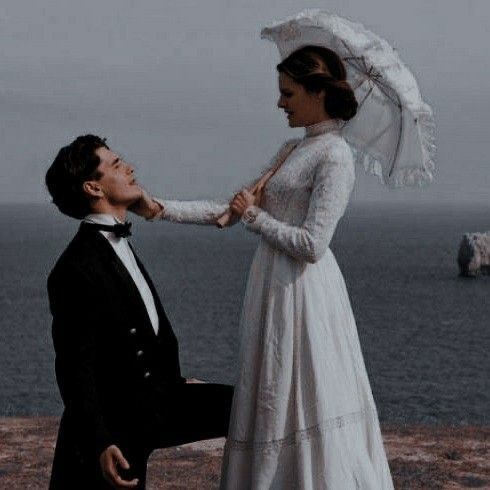
This is a new set of posts focusing on the period of time stretching from the late 19th century to the early 20th Century right up to the start of WWI. I'll be going through different aspects of life. This series can be linked to my Great House series as well as my Season post and Debutant post.
I get asked a lot about courting, what's acceptable or what's off limits and how one may woo a prospective spouse. So let's explore how to win the hand and heart.
Meeting (not so cute?)
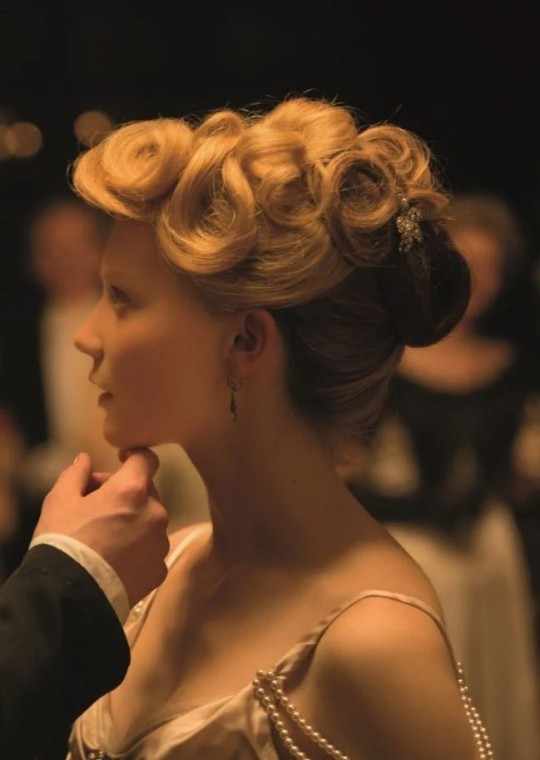
Firstly, it is really difficult to have a meet cute in the Edwardian era. Women and men are kept separate for most of the day, only really getting to meet at designated events: A dinner, a ball, a social event. Meeting in the park is a cute idea but a gentleman can't just approach a lady (or another gentleman) without being introduced by a third party, either a senior party or a mutual friend. However, an introduction at a ball is sort of like Cinderella's get up, it ceases to matter when the ball is over. Your gentleman must not approach a lady after that ball, he must be reintroduced. Once an introduction has been made, he can speak with her.
An Interest

When an introduction has gone satisfactory, a gentleman must make the first move by calling to her parents'/guardian's home and making a formal request to begin courting. Her parents/guardians must consent, usually leading to a short brief interview of the gentleman's family, his connections, his wealth (though in not so vulgar terms, they may inquire where he lives which is an indicator). The woman's opinion did matter, she could give her reasons for accepting or turning down the offer. When the interest is approved, the gentleman can start offering invitations.
Three's Company

Of course, just because the parents agree, doesn't mean the couple gets to be alone. The young lady will be accompanied by a chaperone either a lady's maid, a governess, her mother or another female relative. While the couple is together, the chaperone will always be a few steps behind or have them in sight. She's there to ensure that nothing more than a conversation happens. This is not only for her young lady's reputation but also to save the man from any claims of impropriety. The chaperone also serves as a sort of spy, gauging whether this relationship is worth pursuing.
Activities & Tokens
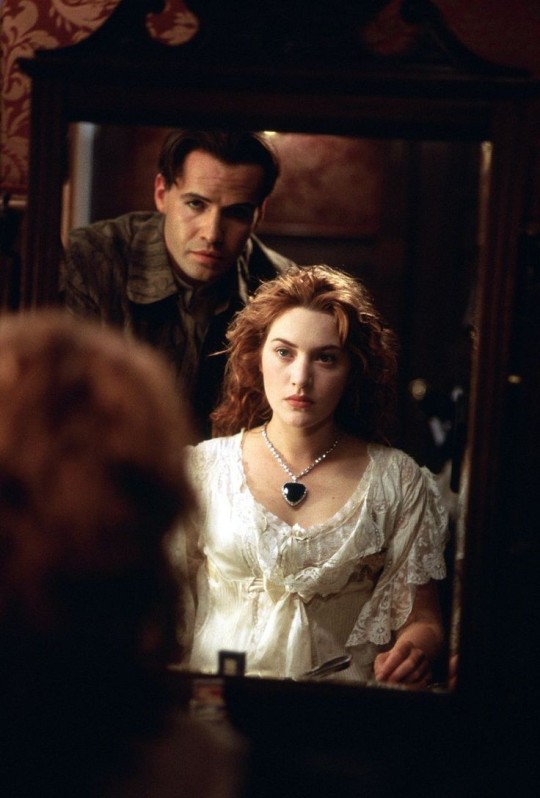
A gentleman may invite a lady out to lots of different activities. He can invite her for a promenade at a local park or gardens, out the theatre, visit her at home, invite her to galleries, to balls or to be his companion at sporting events such as the races, tennis matches or boat races. When visiting in the house, the gentleman would be expected to speak with all the family, be polite and courteous. This is how the family guages his suitably. The gentleman must provide transportation and funds for any excursion. Gifts are to be refined as well. Expensive gifts are considered vulgar and will likely be turned down. Small gifts such as flowers, books, cakes are acceptable. Gifts aren't as important as the time spent together.
Rules of Engagement
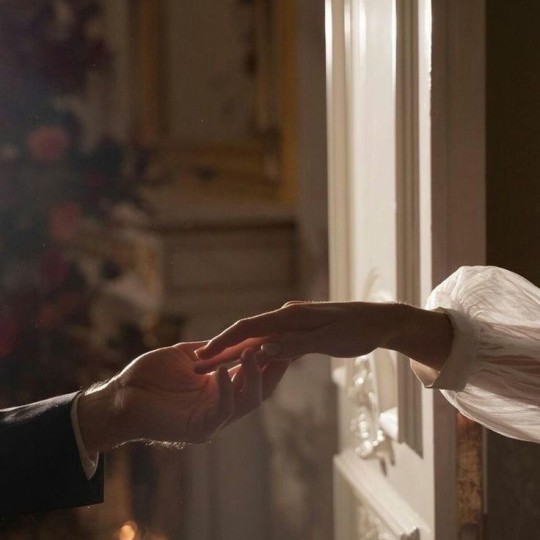
There are certain unspoken rules surrounding courtship that every gentlemen must follow for a successful courtship:
A gentleman should always pay attention to his lady, and not exclude her or cast her off for others
A gentleman never smokes in front of his lady nor forget to remove his hat.
A gentleman must always offer to refresh his lady on an excursion
A gentleman must defend his lady from any offense be it an insult or a scene unfit for her eyes or within an argument. Throwing in an apology for any offense can add a cherry on top.
However if she's the one giving offense, without any reason, the gentleman must seek to create peace, apologising on her behalf.
When walking, a lady will be placed in the inside of the pavement.
A gentleman should never spend above his means to impress his lady. Staying within his means is not only smart but a show of restraint and a glimpse of what life ought to be if they marry.
A gentleman should always offer his assistance when a lady is exiting a carriage or going up a flight of steps or carrying anything heavy.
If a man accompanies a woman to a ball, he's expected to dance with her on her first and last dances of the evening.
A gentleman must always make his intentions known and not string a lady along with no intention of marriage. He must never joke about his intentions or lead her on.
Marriage
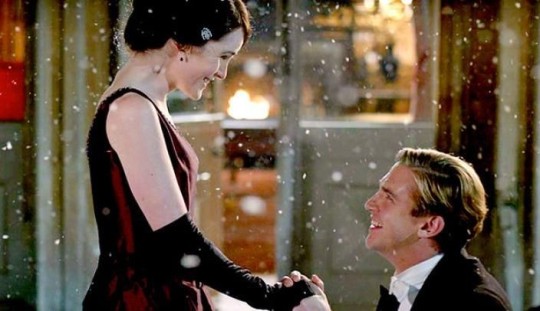
Courtship usually promises marriage which is why a gentleman or lady should not enter into courtship unless they would consider marriage. Courtship may last a few months or a few weeks and while it is going on, both sides should consider whether marriage would be a viable option of either of them. Parents/guardians would be consulted, the gentleman must make his intentions known to her father or nearest male relative before approaching the lady and popping the question. A courtship that doesn't end in marriage is seen as a failure and may damage the reputation of both parties, leading people to wonder what happened and who is to blame. For example is a perfectly eligible gentleman will not marry a perfectly eligible lady or she turns down his offer, people will usually leap to the conclusion that there is something lacking.
LGBTQIA+ Courting


Gay people have always been here. They have courted and they have loved. Whilst it was illegal in this time in many parts of the world, love did prevail. (fun fact: lesbianism wasn't illegal because nobody wanted to explain what it was to Queen Victoria). The good thing to know is that courting whilst gay was likely easier in this period. Whilst there were restrictions and rules for straight couples and chaperones haunted their every step, none of this would happen if two people of the same gender stepped out together. Two gentleman going to the opera together or dining at a restaurant or attending a ball together (dancing in public was unlikely) or two ladies promenading in the park or attending a concert would not be examined like a courting couple. They would have more freedom to move around but of course, with legal impediments PDA was kept a minium. Whilst they wouldn't be allowed to marry legally, there was little stopping couples from moving in together. Nobody would say much about two spinsters sharing a home or two bachelors crashing together
#Etiquette of the Edwardian Era and La Belle Époque Courting#Courting#Courtship#The Edwardian Era#belle epoque#The gilded age#Edwardian#Etiquette#Fantasy Guide#Writing guide#Writing resources#Writing resource#Writer resource#Writer's resources#Writing reference#Writer reference#Writer's reference#writing#writeblr#writing resources#writing reference#writing advice#writer#spilled words#writers
686 notes
·
View notes
Text
Okay writers listen up
I'm gonna tell you about how I wrangled my shitbird brain into being a terrifying word-churning engine and have written over 170K words in under a year.
I wanna be clear that before unlocking this Secret Technique I was a victim of my unmedicated ADHD, able to start but never finish, able to ideate but not commit and I truly and firmly believed that I'd never write a novel and such a thing was simply outside of my reach.
Now I write (and read!!) every day. Every. Single. Day. Like some kind of scriptorial One Punch Man.
Step the First
Remove friction between yourself and writing.
I personally figured out how to comfortably write on my phone which meant I didn't have to struggle with the insurmountable task of opening my laptop.
I don't care if this means you write in a Discord server you set up for yourself, but fucking do it. Literally whatever makes you write!
(if you do write somewhere that isn't a word processor PLEASE back your work up regularly!)
Step the Second
Make that shit a habit. Write every day.
For me, I allow myself the grace that ANY progress on writing counts. One sentence? Legal. Five thousand furious hyperfixated words? Also legal.
Every day, make progress. Any progress.
I deleted Twitter from my phone and did my best to replace doomscrolling with writing. If I caught myself idly scrolling I'd close whatever I was looking at and open my draft and write one (1) sentence until I made THAT a habit, too.
Step Two-point-Five
DO NOT REWRITE. If you are creating a first draft, don't back up or restart. Continous forward motion. Second drafts and editors exist. Firsts are for ripping the fucking thing out of your brain.
If you're working on revisions after an editor or beta readers or whoever has given you feedback, then you can rewrite that's OK (and it counts as your writing for the day!)
Step the Third
Now that you've found a comfortable way to write and are doing it every day, don't stop. Keep doing it. Remember, just one sentence is all you need. You can always do more, but if one lousy sentence is all you can manage then you're still successfully writing.
Remember: this is what worked for me. Try things until you find what works for you.
You can do it. I believe in you.
#am writing#writing resources#original writing#Writer#writeblr#author#Author resources#writing tools#writing#writing tool#long post#text post
5K notes
·
View notes
Text
helpful sites for writers
i have a little collection of websites i tend to use for coming up with ideas, naming people or places, keeping clear visuals or logistics, writing basics about places i've never been to, and so on. i tend to do a lot of research, but sometimes you just need quick references, right? so i thought i'd share some of them!
Behind the Name; good for name meanings but also just random name ideas, regardless of meanings.
Fantasy Name Generator; this link goes to the town name generator, which i use most, but there are lots of silly/fun/good inspo generators on there!
Age Calculator; for remembering how old characters are in Y month in Z year. i use this constantly.
Height Comparison; i love this for the height visuals; does character A come up to character B's shoulder? are they a head taller? what does that look like, height-wise? the chart feature is great!
Child Development Guide; what can a (neurotypical, average) 5-year-old do at that age? this is a super handy quickguide for that, with the obviously huge caveat that children develop at different paces and this is not comprehensive or accurate for every child ever. i like it as a starting point, though!
Weather Spark; good for average temperatures and weather checking!
Green's Dictionary of Slang; good for looking up "would x say this?" or "what does this phrase mean in this context?" i love the timeline because it shows when the phrase was historically in use. this is english only, though; i dig a little harder for resources like this in other languages.
#writing#writing tips#writer resources#writing advice#helpful links#etc.#handy#also the magical careers generator#literally used that earlier tonight#also feel free to add to this list @ anyone
6K notes
·
View notes
Text
How to Write Betrayal
Betrayal is a powerful plot element that is represented in countless stories. The gravity of betrayal brings a profound depth to character dynamics, plots, and themes alike, making it an indispensable tool for writers to explore emotions, conflicts, and the complexities of human nature. Let’s explore some quick tips on how to write betrayal!
Behaviour
Secretive actions
Dishonesty
Becoming emotionally distant
A sudden change in routine
Pushing people away
Nervous or fidgety movement
Frequent lying or making up stories
Unexpected aggression or irritability
Unjustified mood swings or emotional outbursts
Increasingly defensive
Interactions
Disturbed interpersonal relationships
Frequent misunderstandings or fights
Withholding information
Avoiding personal discussions
Insincerity in conversations
Frequently cancelling or missing plans
A sudden shift in relationship dynamics
Quick to deflect or place blame
Frequent subject changes
Gradual emotional detachment
Body Language
Avoiding direct eye contact
Defensive stance and crossed arms
Covering mouth or touching face
Shuffling or restless movements
Forcing smiles or laughter
Constantly looking around or at the ground
Stiff, tense posture
Heavy breathing or frequent sighing
Avoiding touch or skin contact
Exaggerated gestures
Attitude
A lack of concern or empathy
Increasingly personal and hurtful arguments
Erratic or unpredictable reactions
Self-centeredness
Insincerity
Dismissive or negative attitude
Callous disregard for other's feelings
A negative or pessimistic outlook
Inability to handle criticism
Withdrawal from relationships
Positive Story Outcomes
In the wake of a betrayal, a story can manifest various positive outcomes that add depth to the plot and its characters. Relationships can be strengthened, showing their resilience. Characters may discover newfound self-reliance and learn valuable lessons about trust and forgiveness, leading to an increase in empathy and understanding, personal growth, and the reinforcement of personal values. These experiences can encourage a clearer understanding of personal boundaries, prompt self-reflection, introspection, and the development of healthier coping mechanisms. Ultimately, these positive outcomes can bring about improved communication and honesty, forming the silver lining in the cloud of betrayal.
Negative Story Outcomes
The aftershocks of betrayal can reverberate throughout your story. This might include an irreparable fracture of trust and damage to relationships. Betrayal can trigger psychological trauma, leading to an increase in suspicion and insecurity. Feelings of inadequacy or self-blame may surface, and characters can experience a heightened sense of isolation. The fear of forming new relationships or trusting others can become overwhelming. There may also be an escalation of conflict or violence and the reinforcement of negative behaviours or patterns. Damaged self-esteem or self-worth may be another repercussion, and this can encourage destructive coping mechanisms.
Helpful Synonyms
Treachery
Deception
Double-crossing
Duplicity
Backstabbing
Two-faced
Disloyalty
Unfaithfulness
Infidelity
Falseness
Perfidy
Treason
Fraud
Deceit
Slander
Misrepresentation
Falsification
Chicanery
Double-dealing
#writers#creative writing#writing#writing community#writers of tumblr#creative writers#writeblr#writerblr#writing inspiration#writing tips#writblr#writers corner#writing quick tips#quick writing tips#writing resources#writing advice#writer#on writing#writers block#beat writers block#let's write#writing betrayal#writing emotions#character development#writing characters#advice for authors#references for writers#helping writers#writing help#help for writers
6K notes
·
View notes
Text

Vocabulary List for Fight Scenes
Combat Actions
Hoist
Dart/Dash
Deflect
Shield
Sidestep
Snatch up
Stalk
Stamp/stomp
Stretch
Stride
Wagger
Oust
Leap
Lose ground
Mimick
Mirror
Negate
Overpower
Parry
Rear to full height
Resurgate
Suanter
Seize
Take cover
Throttle
Twirl
Unleash
Withdraw
Entwine
Flee
Gain ground
Grasp
Cling to
Breach
Duck
Dodge
Hits
Amputate
Bloody
Carbe
Castrate
Collision
Connect
Crush
Defenestrate
Destroy
Disfigure
Dismember
Dissever
Grind
Maul
Perforate
Rend
Riddle with holes
Saw
Smack
Splatter
Sunder
Torn Asunder
Traumatize
Whack
Writhe
Gut
Hammer
Maim
Mangle
Plow
Puncture
Melee
Assault
Attack
Barrage
Bash
Belebor
Bludgeon
Carve
Chop
Cleave
Clio
Club
Crosscut
Dice
DIg
Gore
Hack
Impale
Jab
Kick
Knock
Onsalught
Pierce
Plnt
Punch
Rive
Shove
Skewer
Slice
Smash
Stab
Strike
Sweep
Swipe
Swing
Transfix
Thrust
Visual Flair
Agony
Asphyxiate
Chock
Cough up bile
Cut to ribbons
Flop limply
Fractue
Freckled with blood
Gouts of blood
Grimane
Hemorrhage
Hiccup blood
Imprint
Indent
Resounding
Retch
Rip
rupture
Shiny with gore
Spew
Splash
Slumped in despair
Splatter
Split
Tear
Topple
Void
Vomit
Wedge
With a fell gaze
With a fiendish grin
With blank surprise
Audible Flair
Bang
Barking
Bong
Boom
Crack
Cackle
Clang
Clash
Crash
Cry
Echo
Elicit a curse
Frunt
Hiss
Howel
Hum
Moan
Muttering
Whoosh
Whistle
Whizz
With a keening cry
Thud
Thunk
Thawk
Splat
Snarl
Swoosh
Squeal
Sing
Sickening Pop
Silintly
Shriek
Shout
Snap
Thundering
Effects
Blind
Burn
Cause frostbite
Cauterize
Concussion
Combust
Daze
Dazzle
Deafen
Disintegrate
Electrocute
Freeze
Fuse flesh
Immobilze
Incinerate
Melt
Pralyse
Petrify
Purbind
Radiate
Reduced to
Shock
Sightless
Stun
Transiluminate
Death Blows
Annihilate
Behead
Decapitate
Disembowel
Eviscerate
Extirpate
Murder
Obliterate
Raze
Exterminate
#writers and poets#writing#poets and writers#writers on tumblr#creative writers#let's write#resources for writers#helping writers#writeblr#creative writing#write#writer#writer things#writer problems#writer community#writerscommunity#writer stuff#writer on tumblr#author#writers#writer's block#writer's problems#writer's community#writer's life#writer's thoughts#writers of tumblr#writers block#writers community#writers corner#vocabulary
5K notes
·
View notes
Text
Words to use instead of ‘said’
**Using the word ‘said’ is absolutely not a bad choice, and in fact, you will want to use it for at least 40% of all your dialogue tags. Using other words can be great, especially for description and showing emotion, but used in excess can take away or distract from the story.
Neutral: acknowledged, added, affirmed, agreed, announced, answered, appealed, articulated, attested, began, bemused, boasted, called, chimed in, claimed, clarified, commented, conceded, confided, confirmed, contended, continued, corrected, decided, declared, deflected, demurred, disclosed, disputed, emphasized, explained, expressed, finished, gloated, greeted, hinted, imitated, imparted, implied, informed, interjected, insinuated, insisted, instructed, lectured, maintained, mouthed, mused, noted, observed, offered, put forth, reassured, recited, remarked, repeated, requested, replied, revealed, shared, spoke up, stated, suggested, uttered, voiced, volunteered, vowed, went on
Persuasive: advised, appealed, asserted, assured, begged, cajoled, claimed, convinced, directed, encouraged, implored, insisted, pleaded, pressed, probed, prodded, prompted, stressed, suggested, urged
Continuously: babbled, chattered, jabbered, rambled, rattled on
Quietly: admitted, breathed, confessed, croaked, crooned, grumbled, hissed, mumbled, murmured, muttered, purred, sighed, whispered
Loudly: bellowed, blurted, boomed, cried, hollered, howled, piped, roared, screamed, screeched, shouted, shrieked, squawked, thundered, wailed, yelled, yelped
Happily/Lovingly: admired, beamed, cackled, cheered, chirped, comforted, consoled, cooed, empathized, flirted, gushed, hummed, invited, praised, proclaimed, professed, reassured, soothed, squealed, whooped
Humour: bantered, chuckled, giggled, guffawed, jested, joked, joshed
Sad: bawled, begged, bemoaned, blubbered, grieved, lamented, mewled, mourned, pleaded, sniffled, sniveled, sobbed, wailed, wept, whimpered
Frustrated: argued, bickered, chastised, complained, exasperated, groaned, huffed, protested, whinged
Anger: accused, bristled, criticized, condemned, cursed, demanded, denounced, erupted, fumed, growled, lied, nagged, ordered, provoked, raged, ranted remonstrated, retorted, scoffed, scolded, scowled, seethed, shot, snapped, snarled, sneered, spat, stormed, swore, taunted, threatened, warned
Disgust: cringed, gagged, groused, griped, grunted, mocked, rasped, sniffed, snorted
Fear: cautioned, faltered, fretted, gasped, quaked, quavered, shuddered, stammered, stuttered, trembled, warned, whimpered, whined
Excited: beamed, cheered, cried out, crowed, exclaimed, gushed, rejoiced, sang, trumpeted
Surprised: blurted, exclaimed, gasped, marveled, sputtered, yelped
Provoked: bragged, dared, gibed, goaded, insulted, jeered, lied, mimicked, nagged, pestered, provoked, quipped, ribbed, ridiculed, sassed, teased
Uncertainty/Questionned: asked, challenged, coaxed, concluded, countered, debated, doubted, entreated, guessed, hesitated, hinted, implored, inquired, objected, persuaded, petitioned, pleaded, pondered, pressed, probed, proposed, queried, questioned, quizzed, reasoned, reiterated, reported, requested, speculated, supposed, surmised, testified, theorized, verified, wondered
This is by no means a full list, but should be more than enough to get you started!
Any more words you favor? Add them in the comments!
Happy Writing :)
#writing resources#writing advice#creative writing#writers on tumblr#tumblr writers#dialogue#writing dialogue#dialogue tags#instead of said#writing community#writer#writeblr#writerscommunity#novel writing#writing#fiction
13K notes
·
View notes